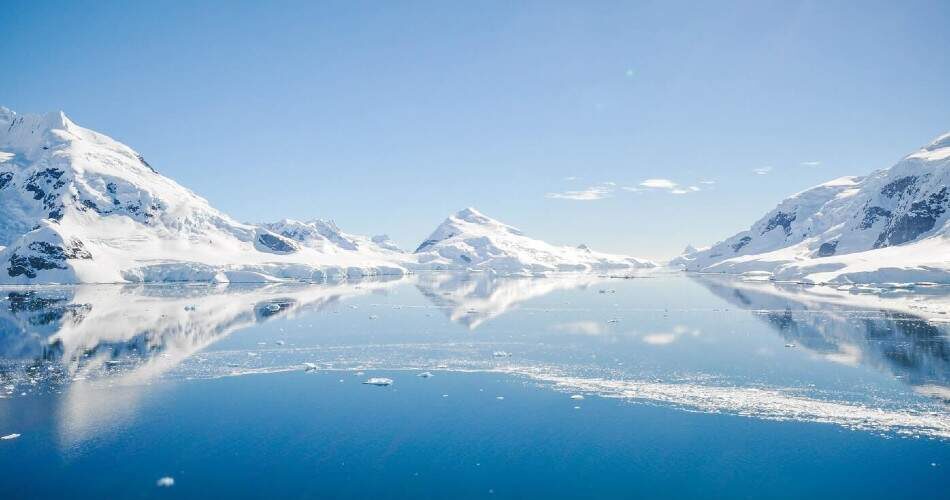Estimated reading time: 3 minutes
Geographical situation
Antarctica is located south of the Antarctic convergence, a region between approximately 55° and 58° south latitude, which surrounds the Antarctic continent.
Antarctic convergence can be defined as the contact zone between the Antarctic waters and the less cold and less dense waters of the sub-Antarctic zone. This limit constitutes an important frontier from the biological and oceanographic point of view and has its equivalent in the atmosphere, where an atmospheric polar front separates cold air masses of the Antarctic region from warmer ones of the sub-Antarctic region. Antarctica covers the territories south of the 60° S parallel, which is the region specified in the Antarctic Treaty. With the exception of the north of the Antarctic Peninsula, practically the entire Antarctic continent lies south of the Antarctic polar circle (66° 33′ S).
Antarctica, an icy continent
The Antarctic continent has an almost circular shape, from which the Antarctic Peninsula penetrates in the south-north direction. It has a diameter of about 4500 km and an area of around 14 million km and less than 1% is free of ice. It is the coldest, driest, windiest continent with the highest average height (more than 2000 m above sea level) of the planet. Its size is superior than Australia and somewhat smaller than South America. It is separated from the latter by the Passage Drake or Sea of Sickles, of almost 1000 km, while the distance to Africa and Australia is 3800 and 2500 km, respectively. It is a continent surrounded by oceans, unlike the Arctic, which is, in essence, an ocean surrounded by continents.
The Transantarctic mountains, an elevated alignment of about 4000 km in length, divide the continent into two unequal parts: west Antarctica and east Antarctica. This last one is constituted, mainly, by very old rocks, in its majority of more than 550 million years, and covered by a layer of ice that, in some zones, gets to surpass 4500 m of thickness. Does not happen the same in west Antarctica, a sector located in southern South America that includes the Antarctic Peninsula, where the rocks are more recent, the ice cover is thinner and, in addition, there is the highest mountain in the continent, Mount Vinson (4897 m above sea level). In this portion of the continent, in recent decades there has been an increase in temperature and a loss of ice more intense than in east Antarctica.
In Antarctica there are some active volcanoes, such as Deception Island in the northern sector of the Antarctic Peninsula, and Mount Erebus, 3794 m high, on Ross Island (east Antarctica), which dominates the ice barrier of Ross.
There are more than 150 lakes hidden under the Antarctic ice, in some cases more than 3600 m below the surface, such as Lake Vostok, which with a size of 14.000 km2 is similar in size to Lake Maracaibo (Venezuela).
In this continent, more than three-quarters of the fresh water existing on Earth is stored, in the form of ice, since the average thickness of the ice layer exceeds 2000 m. If all this volume of ice changed to the liquid state, there would be an increase in sea level of 65 m, although this scenario is not likely in the usual time scales for humans.
Polar days and nights
The duration of the Antarctic day and night is a consequence of the polar location of the continent and the inclination of the terrestrial axis. On the day of the summer solstice (December 21, the date on which starts from the astronomical point of view this season in the south hemisphere), at any south point of the Antarctic polar circle, the day has 24 hours of light; oppositely, at the winter solstice (June 21), it has 24 hours of darkness. The extreme situation occurs in the geographical South Pole, where the sun remains six months without hiding on the horizon and another six months below it. During the transition between winter and summer, when the sun is already close to the horizon, the day passes with gloom. Between the Antarctic polar circle and South Pole, the variations in the duration of day and night are gradual, and the area has summers of long days and winters of long nights.
If you want to find out some interesting facts about Antarctica, check out our article on this topic: 10 interesting facts about Antarctica.
[Photo from Unsplash]
